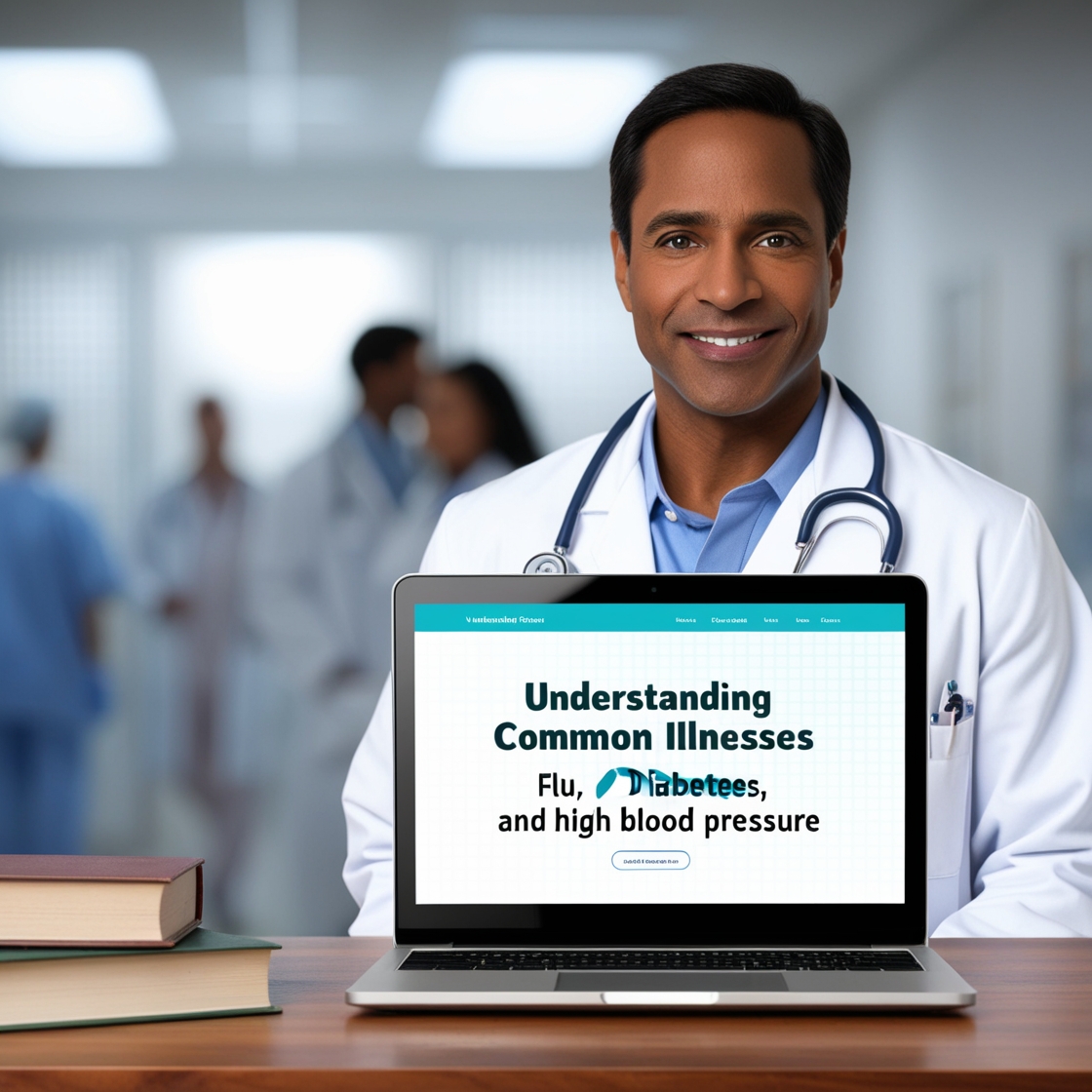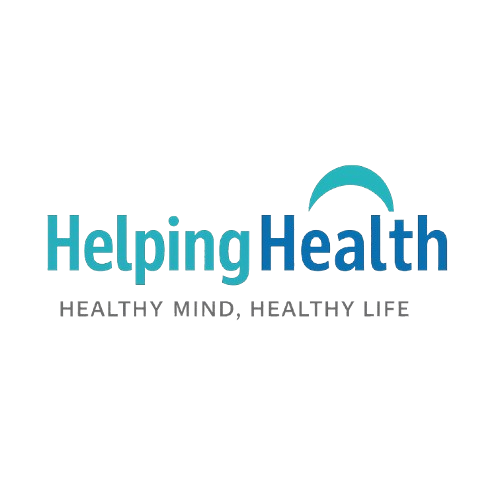
Understanding Common Illnesses: Flu, Diabetes, and High Blood Pressure
Discover everything you need to know about common illnesses like flu, diabetes, and high blood pressure. Learn symptoms, causes, prevention tips, and effective management strategies for a healthier life.
Introduction
Health is one of the most valuable assets in our lives. Yet, millions of people around the world are affected by common illnesses such as the flu (influenza), diabetes, and high blood pressure (hypertension). These c
onditions not only impact day-to-day living but can also lead to serious health complications if left unmanaged.
At Helping Health, our mission is to provide you with trusted, research-backed information that empowers you to live a healthy mind, healthy life. In this blog, we will explore each of these common conditions—covering causes, symptoms, risk factors, prevention, and treatment options—to help you stay informed and proactive about your health.
Section 1: Influenza (Flu)
What is the Flu?
The flu, or influenza, is a viral respiratory illness that spreads easily from person to person. Unlike a common cold, the flu often comes suddenly and can cause severe symptoms that interfere with daily life.
Symptoms of the Flu
-
Sudden fever or chills
-
Headache and muscle aches
-
Sore throat
-
Runny or stuffy nose
-
Fatigue and weakness
-
Cough (dry or wet)
-
Sometimes vomiting and diarrhea (more common in children)
Causes & Risk Factors
-
Caused by influenza viruses (Type A, B, or C)
-
Spread through droplets when someone coughs, sneezes, or talks
-
Touching contaminated surfaces and then touching your mouth, nose, or eyes
-
Higher risk in: young children, elderly, pregnant women, and people with weak immune systems
Prevention Tips
-
Annual Flu Vaccine – the best way to prevent severe flu.
-
Hand Hygiene – wash hands frequently with soap and water.
-
Avoid Close Contact – stay away from sick people when possible.
-
Healthy Lifestyle – strong immunity helps reduce risks.
Treatment
-
Rest and hydration
-
Over-the-counter fever reducers (acetaminophen, ibuprofen)
-
Antiviral medications (if prescribed by doctor)
-
Seek medical care if symptoms worsen or if you are in a high-risk group
Section 2: Diabetes
What is Diabetes?
Diabetes is a chronic condition that occurs when the body cannot properly regulate blood sugar (glucose). This happens either because the body does not produce enough insulin (Type 1 diabetes) or because the body cannot use insulin effectively (Type 2 diabetes).
Types of Diabetes
-
Type 1 Diabetes – Autoimmune condition, usually diagnosed in children and young adults.
-
Type 2 Diabetes – The most common type, often linked to lifestyle, obesity, and genetics.
-
Gestational Diabetes – Develops during pregnancy and usually disappears after delivery but increases long-term risk of Type 2 diabetes.
Symptoms of Diabetes
-
Frequent urination
-
Excessive thirst
-
Unexplained weight loss or gain
-
Constant hunger
-
Blurred vision
-
Fatigue
-
Slow healing of cuts or infections
Causes & Risk Factors
-
Genetic factors
-
Obesity and lack of physical activity
-
Unhealthy diet high in sugar and refined carbs
-
Family history of diabetes
-
Age (risk increases after 40)
Prevention Tips
-
Healthy Diet: Focus on whole grains, vegetables, lean proteins, and fruits.
-
Exercise Regularly: At least 30 minutes of moderate activity daily.
-
Maintain a Healthy Weight: Reduces insulin resistance.
-
Limit Sugary Foods: Avoid soda, fast foods, and excessive desserts.
Treatment & Management
-
Type 1 Diabetes: Insulin injections or insulin pump.
-
Type 2 Diabetes: Lifestyle changes, oral medications, and sometimes insulin.
-
Monitoring Blood Sugar: Regular testing to keep levels within range.
-
Medical Support: Regular check-ups with doctors and nutritionists.
Section 3: High Blood Pressure (Hypertension)
What is Hypertension?
High blood pressure, also known as hypertension, is when the force of blood against the artery walls remains too high for a long time. Often called the "silent killer," hypertension can lead to serious health issues such as heart disease, stroke, and kidney failure.
Symptoms of High Blood Pressure
In most cases, there are no obvious symptoms until damage occurs. This is why regular health checkups are essential.
In severe cases, symptoms may include:
-
Headaches
-
Shortness of breath
-
Nosebleeds
-
Dizziness
Causes & Risk Factors
-
High salt intake
-
Obesity and lack of exercise
-
Stress
-
Family history of hypertension
-
Smoking and alcohol consumption
-
Aging
Prevention Tips
-
Healthy Eating: Low-sodium, heart-friendly diet (DASH diet recommended).
-
Exercise: 30–60 minutes of daily activity.
-
Weight Management: Reduce excess body fat.
-
Reduce Alcohol & Quit Smoking: Improves heart health.
-
Regular Check-ups: Monitor blood pressure consistently.
Treatment & Management
-
Lifestyle changes (diet, exercise, stress management)
-
Prescription medications (diuretics, ACE inhibitors, beta-blockers, etc.)
-
Limiting caffeine and salt intake
-
Stress reduction techniques (yoga, meditation, breathing exercises)
Section 4: How These Illnesses Are Connected
While flu, diabetes, and hypertension are different, they share common factors:
-
Weakened immunity: Flu complications are more severe in people with diabetes and hypertension.
-
Chronic stress & poor lifestyle: Increases risk for both diabetes and high blood pressure.
-
Obesity: Major risk factor linking all three conditions.
Thus, by focusing on a balanced lifestyle, you can reduce the chances of developing or worsening these illnesses.
Section 5: Practical Lifestyle Tips for Prevention
-
Balanced Diet
-
Add more vegetables, fruits, whole grains, and lean proteins.
-
Reduce junk food, sugary drinks, and processed snacks.
-
-
Stay Active
-
Aim for 150 minutes of exercise per week (brisk walking, cycling, swimming).
-
-
Sleep Well
-
7–8 hours of quality sleep supports immunity, metabolism, and blood pressure.
-
-
Stay Hydrated
-
Drink 8–10 glasses of water daily.
-
-
Manage Stress
-
Practice meditation, yoga, or mindfulness techniques.
-
Section 6: When to Seek Medical Help
-
Persistent fever, cough, or breathing difficulties (flu)
-
Frequent urination, extreme fatigue, or blurred vision (diabetes)
-
Severe headache, chest pain, or dizziness (hypertension)
Do not ignore symptoms. Early diagnosis can save lives.
Conclusion
Common illnesses such as flu, diabetes, and high blood pressure may seem unrelated, but they all highlight the importance of healthy routines, preventive care, and lifestyle balance. By adopting simple practices like regular exercise, nutritious eating, stress management, and timely medical checkups, you can significantly reduce your risks.
At Helping Health, we believe that a healthy mind creates a healthy life. Stay proactive, stay informed, and let health be your priority.
